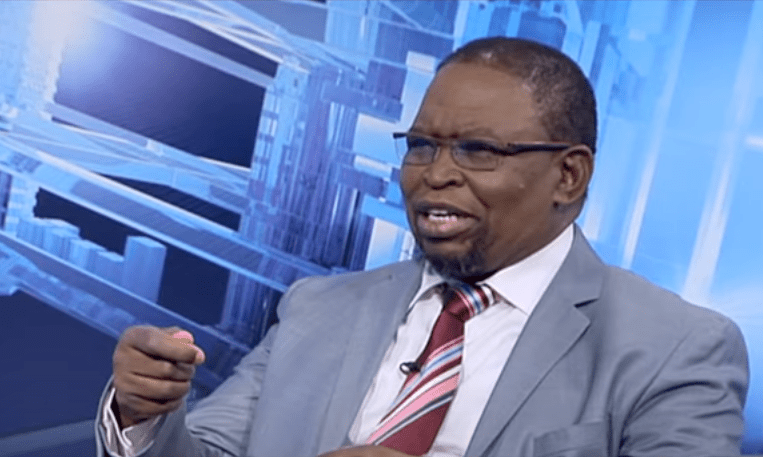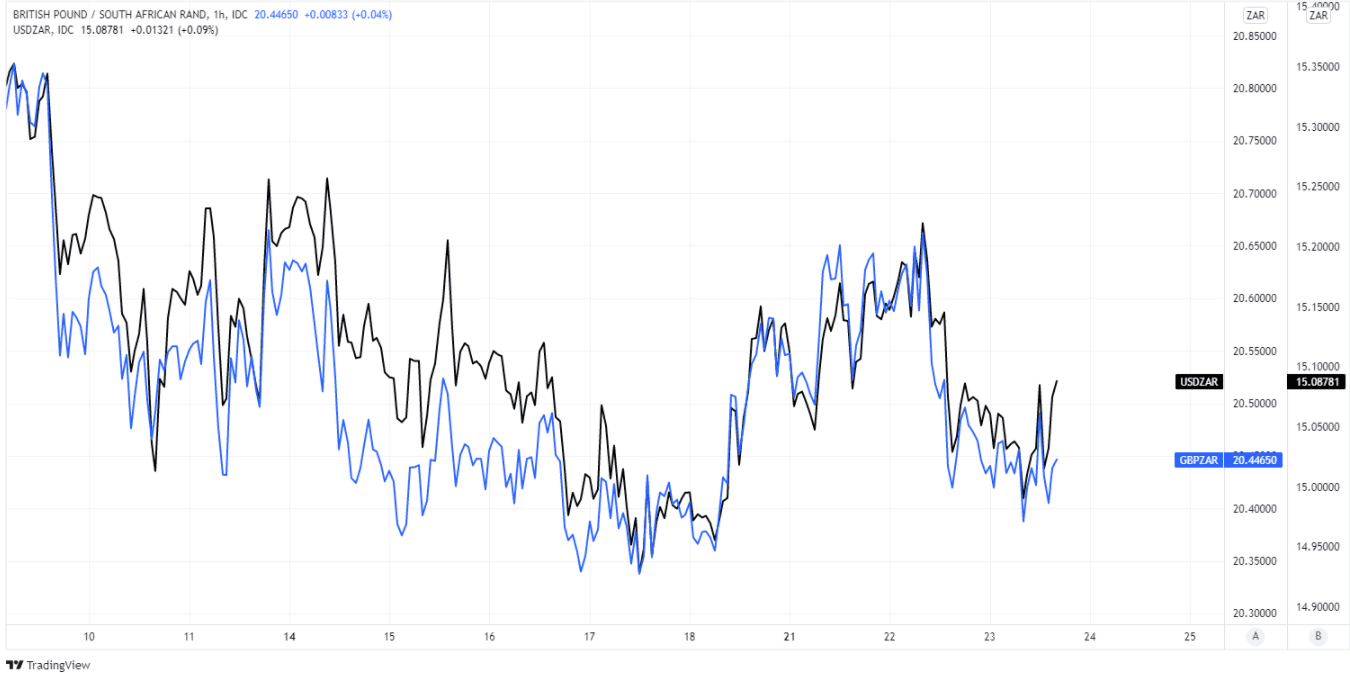South African Rand "Should Remain Supported" after Taking Budget in Stride
- Written by: James Skinner
-
- Buoyant Rand weighing on USD/ZAR & GBP/ZAR
- Budget & recovering global risk appetite support
- Growth outlook improved, multiple risks remain

Above: File image of Enoch Godongwana, copyright Pound Sterling Live, Still Source: SABC News.
The Rand remained buoyant against the Pound, Dollar and other currencies after taking National Treasury’s upbeat 2022 budget forecasts in its stride, leading analysts to revert their attention to international markets where trading conditions remained supportive of the South African unit.
South Africa’s Rand kept the Dollar and Pound under pressure on Wednesday but made little out of Finance Minister Enoch Godongwana’s inaugural budget speech, which included projections suggesting Treasury could achieve a primary budget surplus earlier than was previously envisaged.
“Overall, Finance Minister Enoch Godongwana posted a neutral to slightly positive budget and the rand should remain supported. However, the government remains fixated on creating employment itself instead of allowing the private sector to be the primary job creator,” says Matthew Axelrod, forex manager at DG Capital Forex.
“The rand has taken this budget in its stride, trading relatively flat around R15.05/$. Focus for the local unit now returns to international geopolitical developments,” Axelrod said following the finance minister’s address.
Above: GBP/ZAR shown at hourly intervals alongside USD/ZAR.
Minister Godongwana said a primary budget surplus could be achieved by 2024, one year earlier than was anticipated in February 2021 and due in part to the expectation of stronger growth in tax revenues connected with an 18-month rally in commodity prices.
But he encouraged caution among South Africans about the outlook for the public finances due to the likely temporary nature of the improvement in revenues, and given the country’s still elevated spending commitments.
“One swallow does not a summer make. The improved revenue performance is not a reflection of an improvement in the capacity of our economy. As such, we cannot plan permanent expenditure on the basis of short-term increases in commodity prices,” finance minister Godongwana cautioned.
This is one prospective reason for the limited reaction by the Rand on Wednesday.
- GBP/ZAR reference rates at publication:
Spot: 20.46 - High street bank rates (indicative): 19.75-19.89
- Payment specialist rates (indicative): 20.28-20.36
- Find out about specialist rates, here
- Set up an exchange rate alert, here
Increased tax receipts are expected to reduce the national borrowing requirement by R135.8 billion this year and a total of R131.5 billion over the next two years while the national debt ratio was tipped to stabilise around 75.1% by 2025, which is three percentage points lower than in the last budget.
This and the earlier primary surplus are positive developments for the country and currency but higher debt servicing costs and multiple risks to the economic outlook are likely to leave the Treasury with little room for further increases in spending during the period ahead.
“The government will have to ensure that non-interest expenditure growth is contained at the MTEF targets, given that higher interest rates and a weaker currency could worsen debt service payments and result in a larger budget deficit,” says Isaac Matshego, an economist at Nedbank.
The forecast for the economic growth in 2022 was lifted from 1.8% to 2.1% but projections were left unchanged at 1.6% and 1.7% for 2023 and 2024, implying a slowdown in the economy from this year onward.
Above: GBP/ZAR shown at daily intervals alongside USD/ZAR and selected moving-averages.
“The future of our state-owned companies is under consideration by the Presidential State-Owned Enterprises Council. Their future will be informed by the value they create and whether they can be run as sustainable entities without bailouts,” Godongwana also told parliament.
The anticipated economic slowdown is one of the major risks to Wednesday’s upbeat forecasts, although the public sector wage bill and financial needs of troubled state-owned companies like the energy supplier Eskom were also cited by Godongwana as reasons for caution about the public finances.
South Africa’s unionised public sector workforce has long been a source of cost pressures for Treasury while the ailing energy giant Eskom and likes of the state-owned airline South African Airways have posed significant financial risks.
This is due mainly to their ill health and government guarantees of large debt piles, although there are also other ways in which parastatal companies have, or are able to hold back the economy.
“Domestically, the mining sector needs to overcome its electricity supply and logistical challenges to operate optimally. According to the Minerals Council SA, Eskom’s requested tariff hikes will be detrimental to the economy and in particular the energy intensive mining sector,” says Lara Hodes, an economist at Investec, writing in a February review of output figures for the all-important mining sector.





